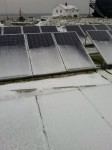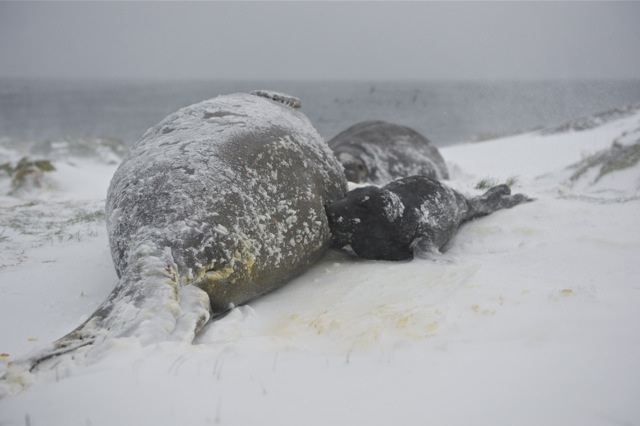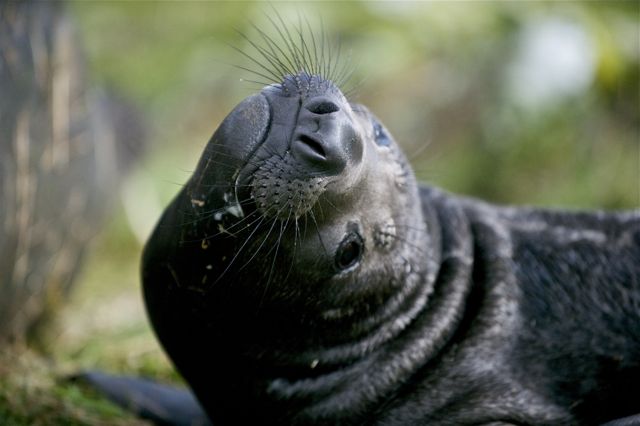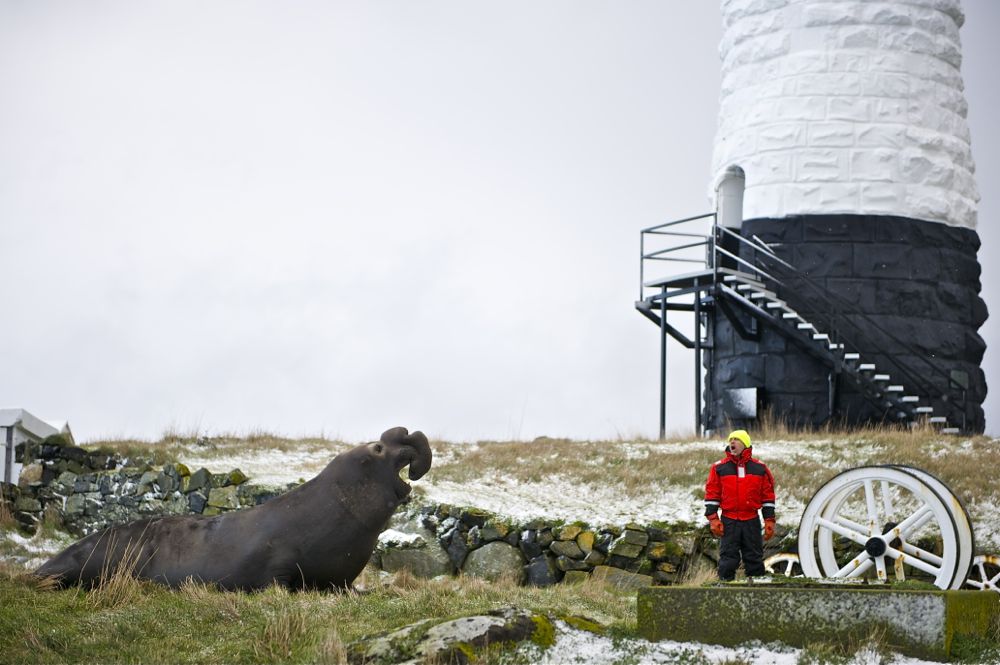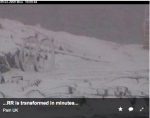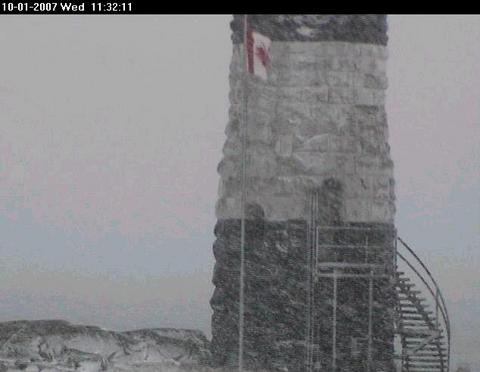I got a ride out to Race Rocks today with Erik to start my winter shift. Pedder Bay was covered in ice up to around the college’s main docks. Courtney updated me on operating procedures and returned with Erik. There was supposed to be a chimney cleaner coming too but it has been snowing since this morning and it was too slippery.
Chunk was in the water by the jetty when we arrived and came up the ramp. He is so big that i thought it was the alpha male, Misery, at first. The scars, from getting chewed up by Misery, are visible on his back.
The snow stopped before sunset so I cleaned off the solar panels. The tilted panels were partly clear whereas the horizontal panels had accumulated about an inch of snow.
- breaking ice in peddar bay
- chunk on ramp
- crane and snow
- “snowlar” panels




